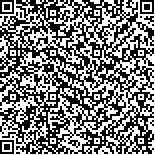| Quote
: |
唐博翔, 陈美丽, 廖小妹, 王玺舜, 余家乐, 李涵宇, 何文智.基于“肝病实脾”理论探讨黄连温胆汤通过修复肠屏障及抑制TLR4/NF-κB通路抗肝纤维化的作用机制[J].湖南中医药大学学报英文版,2025,45(11):2063-2071.[Click to copy
] |
|
| |
|
|
| This paper
:Browser 3times Download 2times |
| 基于“肝病实脾”理论探讨黄连温胆汤通过修复肠屏障及抑制TLR4/NF-κB通路抗肝纤维化的作用机制 |
| 唐博翔,陈美丽,廖小妹,王玺舜,余家乐,李涵宇,何文智 |
| (湖南中医药大学口腔医学院, 湖南 长沙 410208;湖南中医药大学, 湖南 长沙 410208;湖南中医药大学附属长沙市中医医院, 湖南 长沙 410002) |
| 摘要: |
| 目的 基于中医“肝病实脾”理论,探索黄连温胆汤修复肠黏膜屏障、改善肝纤维化的作用机制。方法 将SD大鼠按随机数字表法分为空白组、模型组、秋水仙碱组及黄连温胆汤组,每组8只;除空白组外,其余3组均采用40%四氯化碳(CCl4)诱导肝纤维化大鼠模型,每3 d注射1次,持续8周;在造模第5周,黄连温胆汤组灌胃黄连温胆汤12 g/kg,秋水仙碱组灌胃秋水仙碱溶液0.2 mg/kg,空白组和模型组灌胃生理盐水,每天1次,持续8周。通过HE和Masson染色评估肝肠组织病理变化;ELISA检测血清中肿瘤坏死因子-α(TNF-α)、脂多糖(LPS)含量;Western blot检测肝组织中α-平滑肌肌动蛋白(α-SMA)、Ⅰ型胶原蛋白(CollagenⅠ)及肠组织中闭合蛋白(Occludin)、闭锁小带蛋白-1(ZO-1)、Toll样受体4(TLR4)、髓样分化因子88(MyD88)、核因子-κB(NF-κB)p65蛋白表达水平。结果 与空白组相比,模型组肝组织HE染色显示肝严重损伤;Masson染色可见典型纤维化,胶原纤维面积占比升高(P<0.01);肝组织中CollagenⅠ、α-SMA蛋白表达水平均升高(P<0.01);肠组织HE染色显示肠黏膜结构严重破坏;肠组织中Occludin、ZO-1蛋白表达水平均降低(P<0.01);肠组织中TLR4、MyD88、NF-κB p65蛋白表达水平均升高(P<0.05,P<0.01);血清中TNF-α、LPS含量均升高(P<0.01)。与模型组比较,黄连温胆汤组及秋水仙碱组肝组织HE染色显示肝损伤减轻,Masson染色可见纤维化程度改善,胶原纤维面积占比均降低(P<0.01),肝组织CollagenⅠ、α-SMA蛋白表达水平均降低(P<0.05,P<0.01);黄连温胆汤组肠组织HE染色显示肠黏膜结构明显修复,肠组织中Occludin、ZO-1蛋白表达水平均升高(P<0.01),肠组织中TLR4、MyD88、NF-κB p65蛋白表达水平均降低(P<0.05,P<0.01),血清中TNF-α、LPS含量均降低(P<0.01);秋水仙碱组血清中TNF-α含量降低(P<0.01)。与秋水仙碱组比较,黄连温胆汤组肠组织中Occludin、ZO-1蛋白表达水平均升高(P<0.05,P<0.01);肠组织中TLR4、MyD88蛋白表达水平均降低(P<0.01);血清中LPS含量降低(P<0.01)。结论 黄连温胆汤通过修复肠黏膜屏障结构、降低通透性,并抑制TLR4/NF-κB通路介导的肠源性炎症,从而改善肝纤维化,其“肠肝同治”机制为中医“肝病实脾”理论提供了分子生物学证据。 |
| 关键词: 肝纤维化 黄连温胆汤 肠黏膜屏障 TLR4/NF-κB通路 肝病实脾 |
| DOI:10.3969/j.issn.1674-070X.2025.11.006 |
| Received:July 22, 2025 |
| 基金项目:湖南省自然科学基金项目(2025JJ90044); 湖南省卫生健康委员会项目(D202308018795)。 |
|
| Mechanism of action of Huanglian Wendan Decoction against hepatic fibrosis via intestinal barrier repair and inhibition of TLR4/NF-κB pathway based on the theory of “fortifying the spleen to treat liver disease” |
| TANG Boxiang, CHEN Meili, LIAO Xiaomei, WANG Xishun, YU Jiale, LI Hanyu, HE Wenzhi |
| (School of Stomatology, Hunan University of Chinese Medicine, Changsha, Hunan 410208, China;Hunan University of Chinese Medicine, Changsha, Hunan 410208, China;Changsha Hospital of Traditional Chinese Medicine, Affiliated to Hunan University of Chinese Medicine, Changsha, Hunan 410002, China) |
| Abstract: |
| Objective To investigate the mechanism of action of Huanglian Wendan Decoction(HLWDD) in repairing the intestinal mucosal barrier and ameliorating hepatic fibrosis(HF) based on the TCM theory of "fortifying the spleen to treat liver disease". Methods SD rats were randomly divided into four groups using a random number table method: the control group, model group, colchicine group, and HLWDD group, with eight rats in each group. Except the blank group, the other three groups were induced to develop liver fibrosis models using 40% carbon tetrachloride(CCl4), with injections administered once every 3 days for a duration of eight weeks. At week 5 of modelling, the HLWDD group was gavaged with HLWDD at a dose of 12 g/kg, the colchicine group was gavaged with a colchicine solution at a dose of 0.2 mg/kg, while the blank and model groups were gavaged with physiological saline solution once daily for 8 weeks. HE and Masson staining were used to evaluate the histopathological changes in hepatic and intestinal tissues. ELISA was employed to measure the levels of tumor necrosis factor-α(TNF-α) and lipopolysaccharide(LPS) in the serum. Western blot was performed to determine the protein expression levels of α-smooth muscle actin(α-SMA) and collagen type I(CollagenⅠ) in hepatic tissues, as well as Occludin, zonula occludens-1(ZO-1), Toll-like receptor 4(TLR4), myeloid differentiation factor 88(My D88), and nuclear factor-κB(NF-κB) p65 in intestinal tissues. Results Compared with the blank group,the model group exhibited severe hepatic damage as demonstrated by HE staining of hepatic tissues; Masson staining revealed typical fibrosis with an increased collagen fiber area ratio(P<0.01). Protein expression levels of CollagenⅠ and α-SMA in hepatic tissues were elevated(P<0.01). HE staining of intestinal tissues revealed severe mucosal structural damage, accompanied by decreased protein expression levels of Occludin and ZO-1(P<0.01) and increased protein expression levels of TLR4, My D88, and NF-κB p65in intestinal tissues(P<0.05, P<0.01). Serum levels of TNF-α and LPS were significantly elevated(P<0.01). Compared with the model group, both the HLWDD and colchicine groups showed alleviated hepatic damage in HE staining, improved fibrosis degree in Masson staining, and significantly reduced collagen fiber area ratio(P<0.01). Protein expression levels of CollagenⅠ and α-SMA in hepatic tissues decreased(P <0.05, P <0.01). The HLWDD group demonstrated significant restoration of the intestinal mucosal structure in HE staining, increased protein expression levels of Occludin and ZO-1(P<0.01), decreased protein expression levels of TLR4,My D88, and NF-κB p65(P<0.05, P<0.01), and reduced serum levels of TNF-α and LPS(P<0.01). The colchicine group showed decreased serum TNF-α level(P<0.01). Compared with the colchicine group, the HLWDD group exhibited higher protein expression levels of Occludin and ZO-1(P<0.05, P<0.01) while lower protein expression levels of TLR4 and My D88(P<0.01) in intestinal tissues, as well as reduced LPS levels in serum(P <0.01). Conclusion HLWDD ameliorates HF by restoring intestinal mucosal barrier structure,reducing permeability, and inhibiting gut-derived inflammation mediated by the TLR4/NF-κB pathway. This mechanism of "gut-liver co-treatment" provides molecular biological evidence for the TCM theory of "fortifying the spleen to treat liver disease." |
| Key words: hepatic fibrosis Huanglian Wendan Decoction intestinal mucosal barrier TLR4/NF-κB pathway fortifying the spleen to treat liver disease |
|

二维码(扫一下试试看!) |
|
|
|
|


